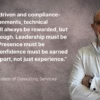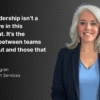The Use of Personality Data to Build and Develop High Performing Virtual Teams
Overview
A company’s workforce has always been its most valuable asset and typically its biggest expense. Attracting and retaining the right talent continues to be a foremost concern for managers. Today, however, many workforce’s operate in a virtual environment. The increase of the virtual team has had a significant impact on managers, who must reconsider traditional management strategies on how to meet the unique challenges (for example: how to communicate and collaborate effectively) of the characteristics of remote teams, whose members live in different time zones, rarely or never see one another in person, and communicate primarily via electronic mediums. This white paper explores some of the major trends that are contributing to the rise of the virtual workforce, examines some of the main challenges related to remote- team management, and outlines the key principles that will help managers achieve success with virtual teams.
The Rise of the Virtual Workforce
The number of employees who work remotely has been on a rapid rise for the past few decades. In the U.S. alone, the number of home-based workers rose from 9.5 million in 1999 to about 11.3 million in 20051. Currently, an estimated 20 to 30 million people work at home at least one day a week 1. This trend is likely to continue. In a recent study conducted by Forrester, 40 percent of respondents (which included senior leaders and hiring managers at U.S. Fortune 500 companies) said at least 40 percent or more of their company’s employees are currently remote workers, and more than half (56%) said they anticipate reliance on virtual teams to multiply in the next one-to-three years 2.
Technology is a contributing factor to the escalation of the virtual workforce. Email use for business is almost a universal institution; and remote workers often use such real-time communication tools as instant messaging and video -conferencing solutions or apps like Skype to collaborate with colleagues and team members. Cloud-based file-sharing tools (such as Dropbox and Google Drive) are readily available at little to no cost, and require no on-premise infrastructure or technical expertise to support and maintain. All of these tools are used as a reliable and consistent way for remote team members to collaborate, regardless of their location.
Adapting to the Challenges of Remote Team Management
As companies embark on global initiatives and outsource jobs to other countries in order to stay competitive, the pressure is on executives and their managers to oversee teams that work efficiently, effectively and collaboratively across different time zones and cultures. However, research indicates low levels of confidence in the ability of managers to navigate these waters. For example, more than half of respondents in a global study said managing virtual teams will be a vital future competency, but only 36.5 percent believed their managers had mastered the necessary skills required to manage virtual teams effectively 3.
What are some of the major challenges associated with virtual-team management as opposed to management of teams that work in the same office space? The main challenges for virtual teams include:
- Difficulty in building a shared sense of purpose
- Over-reliance on electronic communications
- Low team cohesion and trust
- Less satisfaction with the team experience
When team members do not meet consistently in a face-to-face setting, they often have trouble building rapport and a sense of shared trust and allegiance.Meanwhile, managers are frequently left to navigate the virtual workspace with few tools or direction about how to manage conflict, make decisions, provide feedback, facilitate learning and motivate the team to succeed.
“Many managers are not only evaluated on their own performance, but also on the performance of their team,” says Nancy Martini, President and CEO of the global management consulting company PI Worldwide. “And unless you work closely with someone day-after-day, it can be difficult to achieve high levels of camaraderie and comfort with one another.” Research tends to support the idea that such intangibles as body language and internal social opportunities to connect have traditionally been highly important to team cohesion. For example, respondents to the Forrester survey, Virtual Work Environments in a Post-Recession Era, cited “effectively communicating with remote employees (49%),managing projects and deadlines successfully (43%), and creating consensus during decision-making (43%)” as key concerns for managers of virtual workers.
Opportunities for connection are a primary consideration for managers who want to build virtual teams that last long term. The relationship between worker and manager can contribute in a positive way to motivation, loyalty, and overall job satisfaction— all basic contributors to strong retention rates.When an employee leaves, it is likely that connections to colleagues and/or the manager were weak. The paradox is that even while virtual work environments pose unique challenges to establishing bonds and connections, many workers prefer a home-based work arrangement.
A 2012 Reuters survey, for example, showed 34 percent of U.S. workers would, if possible, prefer to work from home 4. And among the younger generation, a remote work environment is increasingly being viewed as an expectation, not a privilege or perk: 29 percent of college students polled by Cisco believe the ability to “work remotely with a flexible schedule” will be a “right” once they enter the workforce 5. The same survey showed 40 percent of college students and 45 percent of young employees would accept a lower- paying job if it offered “more flexibility” on a mobile work style than a higher-paying job with less flexibility.
In many cases, companies offer employees a remote work environment out of necessity; global companies in the technology sector, for example, employ highly skilled employees regardless of their geography. “Often the company needs the special talent and are willing to make it work with flexibility,” says Martini. “Companies will often go out of their way to create a hospitable remote-work environment because they want those employees to be engaged, and they want to encourage them to stay.”
Uncover Team Characteristics with Behavioral Assessments
One of the key characteristics of successful remote team management is a strong sense of shared trust between managers and employees. In essence, managers of virtual teams must trust that team members will:
- 1) Prioritize action items effectively
- 2) Follow through on daily activities required to meet long term goals
- 3) Share information with one another
- 4) Remain motivated to reach the finish line
- 5) Raise concerns as they develop
In a remote working environment, it can be difficult to monitor each of these activities to ensure the team is on track to reach its collective goals. Managing personality thus becomes a crucial aspect of success for the remote manager.
In general, building trust is based on three common elements:
- 1. Past experience with that person. (“Is this person reliable and dependable?”)
- 2. Shared goals with that person. (“Are our actions aligned around the same goal?”)
- 3. Confidence in that person’s skill and ability. (“Does this person have the ability to get the job done?”)
Many companies have found personality assessments a useful tool to help managers uncover natural behavioral characteristics of team members and make strategic decisions about how to assign workflows, identify preferred modes/styles of communication, and gain insight into how to support, coach, and motivate the team.
The Predictive Index® (PI®), a scientifically validated behavioral assessment tool, has been successfully helping companies worldwide delineate drivers of behavior of both individuals and teams since 1955. Martini explains, “Managers need to use all the tools at their disposal, and today that includes behavioral assessments. They need to be able to know that team members can successfully meet the behavioral requirements of the job and that they can effectively collaborate with other team members to work together. This insight helps managers coach their teams, conduct accurate job analysis for new roles and open positions, and manage team dynamics day in and day out.”
Martini also notes that individual personalities inform a larger group dynamic. While a manager must understand individual personalities and character traits of team members, it is just as important to ascertain the personality drivers of the team, holistically. PI’s Group Analytics diagnostic tool is one of the few instruments in the marketplace that enables managers to capture group behavioral data on a larger scale and thus effectively navigate common management challenges.
“Individual contributors have their own personalities,” says Martini. The PI Group Analytics tool compares individual behavioral profiles to reveal the behavioral culture of the team. This allows managers to clearly see behavioral trends to help define high performance, facilitate workflow, reduce conflict and improve group synergy.”
Research indicates managers of the future will need to develop an ability to navigate the personalities of people from multicultural backgrounds. Nearly 72 percent of respondents to an American Management Association survey cited “collaborating with peers from multiple cultures” as a highly important skill; the authors of the study extrapolated that global leaders of the next decade will need to be “more highly adaptable to culture differences, geographic distance, and non-hierarchical organizational structures.” This is a key evolutionary shift from a previous era in which most managers had to translate and transcend the differences between just two cultures, as opposed to many cultures. When you look at this trend as it relates to virtual teams, the challenges to the manager increases significantly.
As INSEAD (European Institute for Business Administration) Affiliate Professor and cross-cultural management expert Erin Meyer pointed out in a video interview, many remote workers are now living in their own country and are using email and telephone conferencing to work on projects, negotiate with suppliers, and sell products to customers across a span of countries.
“The landscape has changed entirely,” says Meyer. “Just over the last ten years…a huge percentage of managers in multinational companies are in situations where they have team members from many different countries that are collaborating together.” Accordingly, says Meyer, it becomes “much more complex for them to even begin to understand the impact that culture is having on their communication.”
Building Trust by Establishing a Shared Sense of Purpose
To achieve any goal, team members must align around strategy, communicate effectively, and collaborate openly. Foremost on any manager’s mind is how to build successful working relationships among team members, and how to establish and increase productivity as the team works to meet its collective goals.
Many management experts recommend managers work with teams to establish a team charter or manifesto that outlines a mission statement, shared values, and guidelines for interaction. A physical document crystallizes expectations and fosters shared agreement about the way the team will work together; these fundamentals can be used by the manager as a guidepost to resolve common communication pitfalls that can erode trust. Fostering agreement around acceptable behaviors also helps define the team as a group with a unified purpose.
Such a document can be especially helpful for teams that work remotely as managers of virtual teams need to pay special attention to communicating how decisions will be made, how and when team members should be in contact (either individually or as a group), and how goals will be measured. Experts 6 say it is important to define three essential components of team interaction:
1. Timeliness. What constitutes a timely reply to an email? Do emails with certain subject lines get priority response times over others?What is the definition of “end of the business day” for teams that work in different time zones? Establishing answers to these questions will help the team benchmark its communication performance. The end goal is to get teams to trust that each individual teammate will reply/respond in a timely fashion to emails, voice-mails and deadlines.
2. Completeness. Are responses and replies fully answering the questions at hand?
Team members must understand the components of a complete request or question. This could include any of the following elements: deadlines, next steps, specific instructions for follow up, etc. Be sure to craft some sample statements or responses team members can use in cases where they feel replies or responses are inadequate.
3. Consistency. Consistency in the quality, timing and style of interaction builds a bridge to trust with virtual teams. Teams work best when they know they can count on other members to deliver similar levels of performance from project to project.
These three elements are all components of building trust among a team working in a virtual environment. Because managers are in a leadership role, they must be aware of these components and make their behavior in these areas a model for the team as a whole. INSEAD Affiliate Professor Erin Meyer notes that a “highly defined process where team members deliver specific results in a repeated sequence” is a major contributing factor to team success in a virtual environment. “Reliability builds trust and is firmly established after two or three cycles.” 7
Managers must also strive to clearly define roles for each team member, says Meyer. When teams work onsite in the same office, managers can sometimes get by with loosely defined job descriptions and even encouraging team members to share roles. This is much more difficult to accomplish virtually. “Virtual teams need a manager who provides clearly defined direction and removes all ambiguity from the process,” writes Meyer. “Research by my fellow INSEAD professor José Santos demonstrates that highly centralized coordination usually works best in globally distributed teams.”6
Martini says it’s important for managers to know how the personalities of each team member align with their roles and responsibilities. She notes that clients use the Predictive Index assessment to gain a view of individual team member’s motivational needs and behavioral drives. They then use that insight to assign roles and responsibilities, manage job expectations and drive the team’s performance over time. “The results from an employee’s Predictive Index survey allows the manager to readily see if the individual is a good fit for the job, the team and the organization,” she explains. “There is no such thing as a ‘bad’ PI; the results of the PI survey relative to the behavioral requirements of the job create the synergy. Managers don’t want to ask people to knock themselves out every day trying to be something they’re not.”
Conclusion
In our knowledge-based economy, a company’s biggest asset is its people. Its biggest challenge is empowering managers with the skills to coach, mentor and develop the talent critical to the productivity and longevity of the business. To gain a better foothold in the market for talent, companies must be prepared to embrace and sustain remote teams and engage workers who understand how to work together successfully in a virtual environment. Accordingly, managers who are skilled at navigating the unique challenges of the remote team will be in high demand as virtual workforce’s continue to expand. These skills will help guide their teams and their companies to greater success.
Best practice: How One Company Built a Successful Virtual Team
Since its founding in 2009, interactive marketing agency Raidious has employed virtual workers to deliver its expert digital marketing services to national brands such as Wal-Mart and Angie’s List. Although the company has a physical office in Indianapolis, Indiana, its 17 full- time employees work remotely, collaborating in small teams with freelancers based all over the world.
“We built our entire company in the Cloud,” says Raidious Co-founder and Chief Technology Officer Brian Wyrick. “Every single project we do is based in a Web browser.”
Wyrick says learning how to manage virtual teams has been a path of discovery. “We have a highly dynamic, fast-paced work environment so our employees tend to be independent self-starters with a high sense of urgency,” he explains. “In a team dynamic, especially one that functions virtually, such strong personalities can clash, and on occasion, we’ll have breakdowns in communication.”
While technology helps employees stay connected, the company relies on behavioral science to help their teams communicate and collaborate effectively. Raidious uses the Predictive Index(PI) behavioral assessment system to measure the behavioral drives of each employee.
When building and managing remote project teams, the team manager works with their Predictive Index consultant to utilize PI data collectively using the Group Analytics tool. Managers can immediately see trends and inconsistencies in personalities within the group that may impact productivity.
“In some scenarios, we’ve purposely put [certain types of] behavioral profiles on a project, because…we know they’ll make an effective combination,” says Wyrick. Understanding behavior through these assessments has helped Raidious successfully work through “high tension” moments, says Wyrick, and has helped build a framework for effective communication every day.
Ryan Smith, Chief Operating Officer at Raidious, adds that assessments have also helped them make smarter hiring decisions, ensuring that a potential employee will thrive in this style work environment over the long term. “We’ve had really great success along with some struggles with our team being so spread out,” he says. “We use PI to make sure we are choosing the proper candidates that will be able to handle working in [an] office and remotely…PI gives us a much better shot at getting it right the first time, rather than making costly mistakes in hiring.”
As the company looks forward to developing their workforce strategy to manage dynamic growth over the next two years, the Predictive Index assessment will play a key role in supporting their rapid expansion plans. “We’re looking forward to expanding our virtual team and using Predictive Index tools to help us scale our growth and set a formidable foundation for the future,” says Wyrick.








